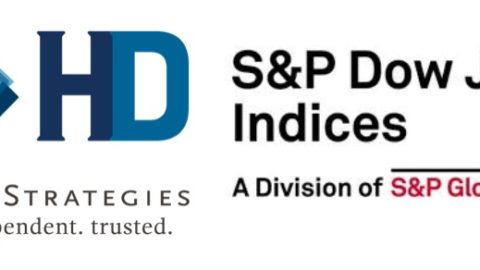Inflation: Punching Back
Part 2: Our response and recent changes to client portfolios
by: Steven Higgins, Financial Advisor, Partner

It’s certainly no secret that we are witnessing a tide of inflation as the cost of living continues to rise. Policy makers are in full reaction mode reassuring the public and investors alike that the inflation response is the priority. While some will legitimately argue that the Federal Reserve has been slow to react, critics have acknowledged that the recent, historical large increases to the Fed Funds Target Rate indicate a Federal Reserve that is now fully “on the job.” With the whipsaw increase to interest rates, the geopolitical stress on an already struggling supply chain, and the still ever-present global pandemic; nobody should be surprised that this year has been a volatile experience for all kinds of investors.
In part one of this article series, “Inflation: The Punch We Saw Coming,” my partner, Allison Schmidt, lays out the historical context of where we are. Allison wrote,
“The most significant inflationary period ran from May of 1978 through March of 1980. During that time the average inflation rate was 10.55% and the max was 14.76% (72% higher than today at 8.58%). During this time period, the market (as measured by the S&P500) was very volatile with a maximum drawdown of about 18% (our maximum drawdown year to date is 23.55%), and the total S&P500 return was 4.62% or a real return of -5.93%.” Allie continues, “But, what’s interesting is what comes next. Inflation fell from the peak of 14.76% in March of 1980 for the next 3 years by almost 76% to a read of 3.59% in March of 1983. How did stocks react after the inflation peak? See the chart below for S&P500 returns over various time periods after the inflation peak.”

You got it! This is the part of the article where we remind you that we are in this for the long haul, and as always, we have a process. At this point a good number of readers are feeling a surge of angst. You’re mad, you might find blame based on your own political angle, frustration over what you feel like is a derailment of your retirement plan, or you might be led to believe that this time is different. All totally legitimate feelings. However, regardless of the story, history tells that like all other seasons and storms this too shall pass and we all have to plan for the most likely scenario, which is you continue to have dreams and goals for you and your family and those dreams and goals will be more expensive in the future.
Our clients know our investment process is made up of three key elements. We start with 1.Modern Portfolio Theory which, boiled down states that 1. Asset allocation will determine almost all of your portfolio return over-time. 2. Risk adjusted returns are as or more important that maximum return. 2. The second element of our process is acknowledging and giving credence to economic realities. For example, starting in 2017, we have been acknowledging and communicating extensively our belief that inflation would return to the narrative and be the driving economic force of the the near future. We believed high quality stocks would be volatile but yield significant net growth (S&P 500 was up over 70%*). We believed real estate prices would dramatically climb (Case Shiller Home Index is up 55%*). We believed interest rate increases would cause challenges for bonds (this is the worst period on record for the bond aggregate index, down over 13%* at the worst.). All of these thoughts have been reflected in our investment and financial planning process. 3. Lastly, we apply a systematic approach to tactical rebalancing. Long story short, we remove the emotional barriers to buying low and selling high. Volatility is ever present and normal so we take advantage of it for the benefit of our clients.
Our clients know our investment process is made up of three key elements.
- Modern Portfolio Theory which, boiled down states that:
- Asset allocation will determine almost all of your portfolio return over-time.
- Risk adjusted returns are as or more important that maximum return.
- Acknowledging and giving credence to economic realities. For example, starting in 2017, we have been acknowledging and communicating extensively our belief that inflation would return to the narrative and be the driving economic force of the the near future. We believed high quality stocks would be volatile but yield significant net growth (S&P 500 was up over 70%*). We believed real estate prices would dramatically climb (Case Shiller Home Index is up 55%*). We believed interest rate increases would cause challenges for bonds (this is the worst period on record for the bond aggregate index, down over 13%* at the worst.). All of these thoughts have been reflected in our investment and financial planning process.
- We apply a systematic approach to tactical rebalancing. Long story short, we remove the emotional barriers to buying low and selling high. Volatility is ever-present and normal, so we take advantage of it for the benefit of our clients.
*Ycharts.com
This year has brought new challenges and opportunities. On two occasions, we have initiated a tactical “re-balance” or “re-position” to capture better values in equity prices. More recently, our clients will have noticed a brief increase in activity in their portfolios as we made changes to align portfolios with a changing landscape, and increase efficiencies made possible by new opportunities being exposed by the market volatility.
Recent Changes to Portfolios
- Increase Bond Portfolio Duration – For years now we kept the average maturities of our bond portfolios very short. Duration is the measure of interest rate sensitivity with a lower duration number being less sensitive. Our average duration had been less than 1 for a long time. As interest rates dramatically climbed and bond prices deteriorated our bond portfolios held firm. As the 10 Year Treasury climbed over 3% after rocketing up from just .64% last year, we extended the duration of of our bond portfolios to about 4. We still remain significantly shorter than the Bond Aggregate Index which measures its duration at 8. By no means do we think interest rate risk is off the table but the increase in value has allowed us to significantly increase the yields in the portfolios in way that hasn’t been available in years.
- Reaffirmed Overweight to Value Equities – In December of 2021 we rotated from an overweight to growth stocks to an overnight to value stocks. Value stocks have significantly out performed growth year-to-date and the continued volatility has continued to expose significant value in high quality stocks. We recently made portfolio adjustments to capture opportunities and increase the overall quality and efficiency of the equity portfolios.
- Refined Exposure to Alternative Assets – Think of “alternatives” as anything other than a stock or bond. Alternatives can be used to decrease risk or increase risk. Our long held view is that our long term growth will be achieve though stock allocations so we use “alternatives” to act as a ballast, increase predictability, maintain, liquidity and increase the overall risk-adjusted return. As both the stock and bond markets have been roiled we have adjusted the dial on our alternatives to reflect the landscape. For 5 years we maintained portfolios that were in a sense, pre-inflationary, we now reflect a moderating environment in inflation and ultimately interest rates.
- Routine Examination of Money Managers and Cost – as part of our process we routinely examine the appropriateness of all of the money mangers in our portfolios. Cost and risk adjust returns relative to the appropriate bench mark are the primary factors we consider. Periodically adjustments are made to create a more predictable and efficient portfolios for our clients.
Our clients are well aware that we have an investment process and a financial planning process and both are designed to work together to achieve client goals and desired outcomes. We know the narratives being pressed upon our clients daily serve as a distraction and emotional challenge to an otherwise long-term spirit. For us, the volatile times don’t erode our spirt. Instead, this embolden us to work harder and refine not only our process but the way we communicate to our clients. We want to provide a resounding confidence in the face of the short term peril that shall also pass, like all other seasons and storms. I certainly can’t tell you if we’ve bounced off the bottom, or if there’s worse pain around the corner. Both are entirely possible and we can make an argument for either. But either way, we’re here for it. Look for part three of this series coming soon and in the meantime, if you have any questions, please reach out!
Securities offered through LPL Financial, Member FINRA/SIPC. Investment advice offered through Higgins & Schmidt Wealth Strategies, a registered investment advisor and separate entity from LPL Financial. The opinions voiced in this material are for general information only and are not intended to provide specific advice or recommendations for any individual. All performance referenced is historical and is no guarantee of future results. There is no guarantee that a diversified portfolio will enhance overall returns or outperform a non-diversified portfolio. Diversification and asset allocation does not ensure a profit or protect against a loss. Stock investing involves risk including loss of principal. Bonds are subject to market and interest rate risk if sold prior to maturity. Bond values will decline as interest rates rise and bonds are subject to availability and change in price. Rebalancing a portfolio may cause investors to incur tax liabilities and/or transaction costs and does not assure a profit or protect against a loss.







